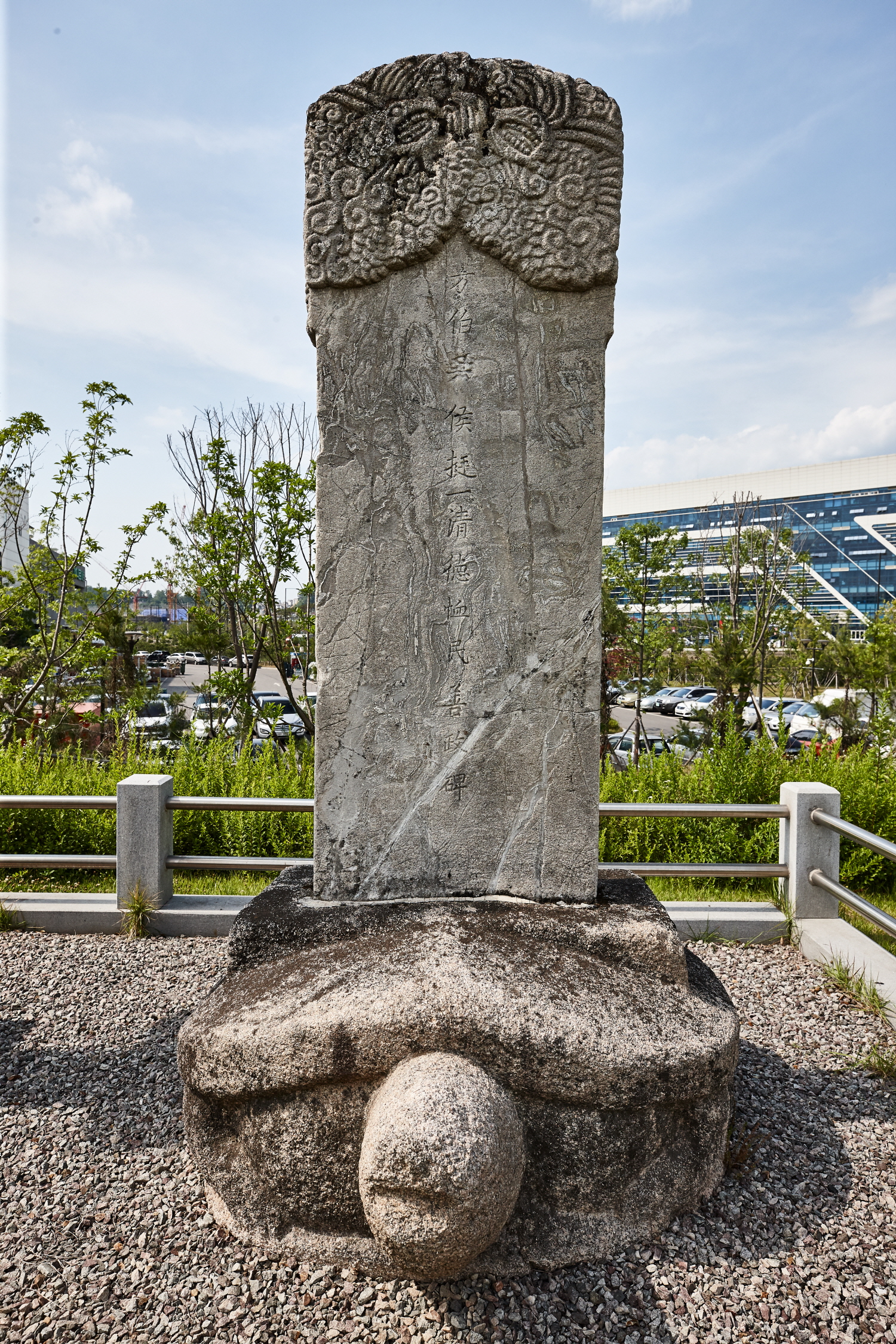
Dongsan-dong Biseokgun (Gravestones)
Designation number: Regional Cultural Properties No. 47
Location: 10-2 Dongsan-dong, Deokyang-gu, Goyang-si
Goyang Dongsan-dong Biseokgun is located in the corner of Changneung park near Tongilro road. From the right, the monuments are in an order of Oh Jeong Il seonjeongbi, Deoksujassi Gyobimyeong, and Eomchan seonjeongbi. These monuments show Goyang 350 years ago, of its historical situation, major ruins, roads, etc. and these records are especially used for geographical and literature studies academics.
1. Bangbaek Ohujeongil Cheongduk Hyulmin Seonjeongbi
It is a large monument with a total height of 3m. It is divided into two parts: the lower(Guibu), middle(Bisin) and the upper(Isu) part of the temple. This monument was built to honor the virtues of Oh Jung Il, a provincial governor of Gyeonggi province at the time, making a new stone in the Deoksucheon (now Changneungcheon) in 1660AD. Inscriptions remain on the front and back so you can see exactly what year it was built.
Oh Jung Il (1610-1670) is the liege of Joseon dynasty, named Dongbok and Ho of Guisa.
In 1639, he passed the civil service examination and later served as a provincial governor of Hwanghaedo and Gyeonggido, Doseungji, Hojopanseo, etc.
2. Goyang Deoksu Jassi Gyobimyeong
It is a tombstone with a total height of 3.4m, and it has a shape of a rectangle with Bisin and Okgae. The inscription has two headings, one at the top and another carved vertically below it. In the first year of the Joseon Dynasty (1660), the monument was created by the residents of the South and the Goyang areas of Joseon Dynasty at Deoksucheon(now Hyeonneungcheon). According to the inscription, people made a stone bridge to prepare for the flood and to let the King and people pass it comfortably. Approximately 800 people's names are written on the front and back sides of the rock, and it is recognized of the academic and cultural value.
3. Goyang Gunsu Eomchan Seonjeongbi
It is a small monument at the very left end.
Eomchan has served Joseon Sukjong until the 16th (1690), and served as Goyang Gunsu until 22nd December of Sukjong’s 17th. This monument was a granite inscription to honor the municipality's accomplishments by Gunsu at that time. Eomchan’s Gunsu was relocated to Chungjumoksa.
Bigal
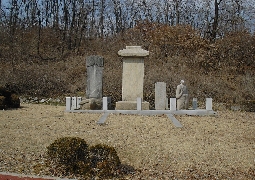
Bab Grandmother Stone statue, general at Siege of Haengju Japanese Invasion of Korea
Designation number: Goyang City Regional Cultural Properties No. 46
Location: 10-2 Dongsan-dong, Deokyang-gu, Goyang-si, Gyeonggi-do
In a messy village with the first road used to enter Goyang from Seoul, Tongilro, and a new city in the midst of Samsong and Eunpyeong New Town, there is a stone statue standing in the village of Dongsan-dong, overlooking Mt. Bukhansan with its neck part damaged. This stone statue, which the villagers call Bab Grandmother or Old Stone Grandmother from long ago, is now designated and protected as a regional cultural asset of Goyang city.
The stone statue has a total height of 141cm and a chest size of 85cm.
In front of this stone statue, villagers are offering sacrifices to Bab Grandmother and pray for the peace and development of the village. The original surname of Bab Grandmother is known as Haeju’s Oh. (There is also a story of having Miryang’s Park as surname).
When the Japanese Invasion of Korea broke out, she helped the military forces in Goyang, Eunpyeong-gu of Seoul and Yangju-gun to set up a nationwide achievement. Currently, in the Goyang area, Bab Grandmother is seen as a woman patriarch, the leader of Haengju and the victory. It is also said that she participated in the help for the people who were suffering from the disease.
In the third grader’s social studies textbook in Goyang-si elementary school, story of Bab Grandmother of Dongsan-dong is introduced as legend. With wise strategy, the North and South Mongolia armies were defeated, and thus Bab Grandmother’s stone statue in Dongsan-dong is where young students often come and take pictures.
Buddhist image

Sadness about the death of only child at a young age .. Lee Gyuryeong’s gravestone
Designated number: Goyang City Regional Cultural Properties No. 45
Location: Mt. 42-4, Byeokje-dong, Deokyang-gu, Goyang-si, Gyeonggi-do
It is not easy for the general public to access the monument of Lee Gyu-ryeong, the only son of Heewongun’s, located in the mountains of Beokje-dong in Dokyang-gu, Goyang City. The monument was built around 1666 by the father of Lee Gyu-ryeong and the grandson of the ancestor King, Heewongun.
The grieving inscription is difficult to find in other monuments, that Lee, Gyu-ryeung, his only son, died early at the age of 11 and that he was in a deep sorrow. The stone material is considered to be rare, Yangju Aeseok as a whole.
At the beginning of the inscription, it described the father 's sorrow about son’s death at a young age, and that he bought servants and rice fields with the son’s money, added by the exact date of sacrifice and items to use in the sacrifice, including pheasant's legs, watermelons, grapes, chestnuts, halibuts and abalones. In the last part, it ended asking the descendants and servants to continue such sacrifice traditions for his death, too.
The Lee Gyuryeong's gravestone inscription is an unusual stone inscription in Korea with a great historical value, which provide important clues about the property of the royal family, traditions, funerals and sacrifice foods at the time.
Mortuary monument
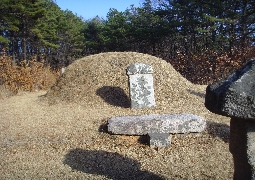
The son of Taejong, Ikryeonggun Ichimyoso mausoleum
Designated number: Goyang City Regional Cultural Properties No. 44
Location: Mt. 144-10, Seongsa-dong, Deokyang-gu, Goyang-si, Gyeonggi-do
Ikryeonggun Ichi mausoleum is on the left road from Wondang Station to Seooneung.
It is the royal mausoleum of Joseon Dynasty in the village of Origol in Seongsa-dong, recognized of retaining its old forms and values.
In front of the mausoleum, Jangmyeong stone lights are guarding the mausoleum, preserved the Goryeo method of six-angled.
There are two fire holes and the four pillars that are preserving the precious cultural heritage. It says to be built on March 13, Joseon Sejo 12th (1466).
The mausoleum has 1 each of the tomb, honyuseok, guards, covering stones, stone lights and muninseok. In particular, muninseok is known as to have the outstanding work featuring the characteristics of Joseon Dynasty. The granite tombstone on the front of the temple is recorded as 'Taejonggongjeongdaewangja Ikryeonggun Soganggongjimyo (grave of the Taejong Ikryeong)’, and Ikryeonggun is the eighth son of Joseon 3rd Taejong, and his mother is Seongbin Ahn.
Ikryeonggun has been known for its kind character, modesty, and excellent academic performance.
He had two wives, Unbong Park and Pyongyang Cho, and had two sons with Pyongyang Cho.
Family of Lee Won-Ik, the center figure of the founding group to kick out Gwanghae army in 1623, his Siho was Soganggong and died in 1464 (Sejo 9th) at the age of 43.
Minmyeong
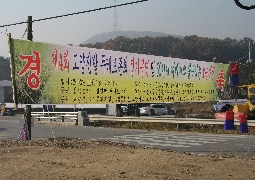
Seongjin Jinbat Durepae
Seongseok-dong Jinbatdurepae is famous for its folklore and traditional nongak band, which are representative features of Goyang city along with Songpo hommigulyi that was already designated as Gyeonggi-do’s Intangible Cultural Property #22. This is the Junbat Village of Seongseok-dong, belonging to Gobong-dong in the eastern part of Ilsan-dong, where Jinbatdurepae is carried on. The town has about 70 retention members who can sing folk songs like farming sounds, a juggler who deals with all kinds of musical instruments and dancers. Jinbatdurepae has 12 madangnori, with changing rythms from 1 to 12 tunes, and the 12th is for dancing. Originally, this farm songs used equipments but these days it has been much simplified without them.
The special thing about Durepae is having Jegeum(violins) and many number of Bukgu(low drums). Violins are not easily seen in other folk songs, but they must be included in Durepae, making it Goyang’s representative and having a significant intangible cultural property values.
Intangible cultural property(Nong-ak play)
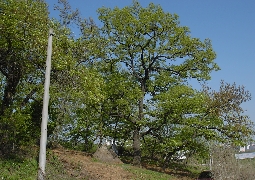
The trees that pray for the peace of the village and the unusual view, Pungdong Dangsanmok and Sanchiseong
It is a kind of Dong festival that has been held for hundreds of years in the village of Dongdung-gu, Ildong-gu, Goyang-si. In other areas, it is practiced in the name of Dodang-gut, Dodangje, and Sansinje. The characteristic is that the blind man carries out the theme with his poetry, Sanchiseong, unlike any other place. It’s held once every two years in the lunar month of October from the 1st to the 5th day of the lunar calendar. Now, in the Pudong area, the event is held under the oak tree that is over 200 years old.
Dangsanmok and resources (Teojutdari, Upyanggari), located in the village of Pungdong, are good resources to know about the folk customs and local beliefs. The village of Pungdong has been called as so since there were many maple trees in the past. Especially, there were many fields where farming is well done. The village has been preserved in its original form with the purpose of the village's good fortune and good harvest origin for hundreds of years and is now transferred to the residential development district.
Intangible cultural property(mountain spirit rite)
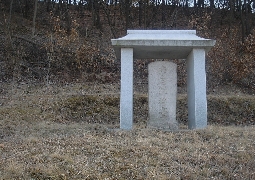
Goyang’s General during the Japanese Invasion of Korea, Leeseoktan Jangdaebi
Designated number: Goyang City Regional Cultural Properties No. 39
Location: 48-1 Donae-dong, Deokyang-gu, Goyang-si, Gyeonggi-do
Leeseoktan Jangbaebi in the late Joseon Dynasty, located at the foot of Dorasan connects to the Changneungcheon from the Donae-dong Heuungdo Elementary School.
Currently, there are no other graves or gravestones around it, and it is well preserved by getting rid of surrounding mountains. The granite is 5cm and non-sinusoid, with no cracks or brooms, and the upper part is slightly wider than the bottom part.
On the front of the gravestone, it is labeled ‘Leeseoktanjangdae’, and on the back, ‘Seonsaengimjinuibyeongseoldae Hubaeksasipgunyeongyeongsin Donginlip’, telling that the location of this pole was established where Seoktan Leeshinui had a battle with the Japanese. According to this record, the pole was built by the villagers in 1740.
Seoktan Leesin (1551 ~ 1627) was a liege of the middle Joseon Dynasty, family of Jeonui, named Gyeongchik, and ho was Seoktan, and one of the Goyang 8hyeon. A son of Wonson, Minsoon’s literary man and served as Ijopanseo and later sacrificed in Goyang Munbongseowon and Hwaamseowon of Goesan.
Bigal
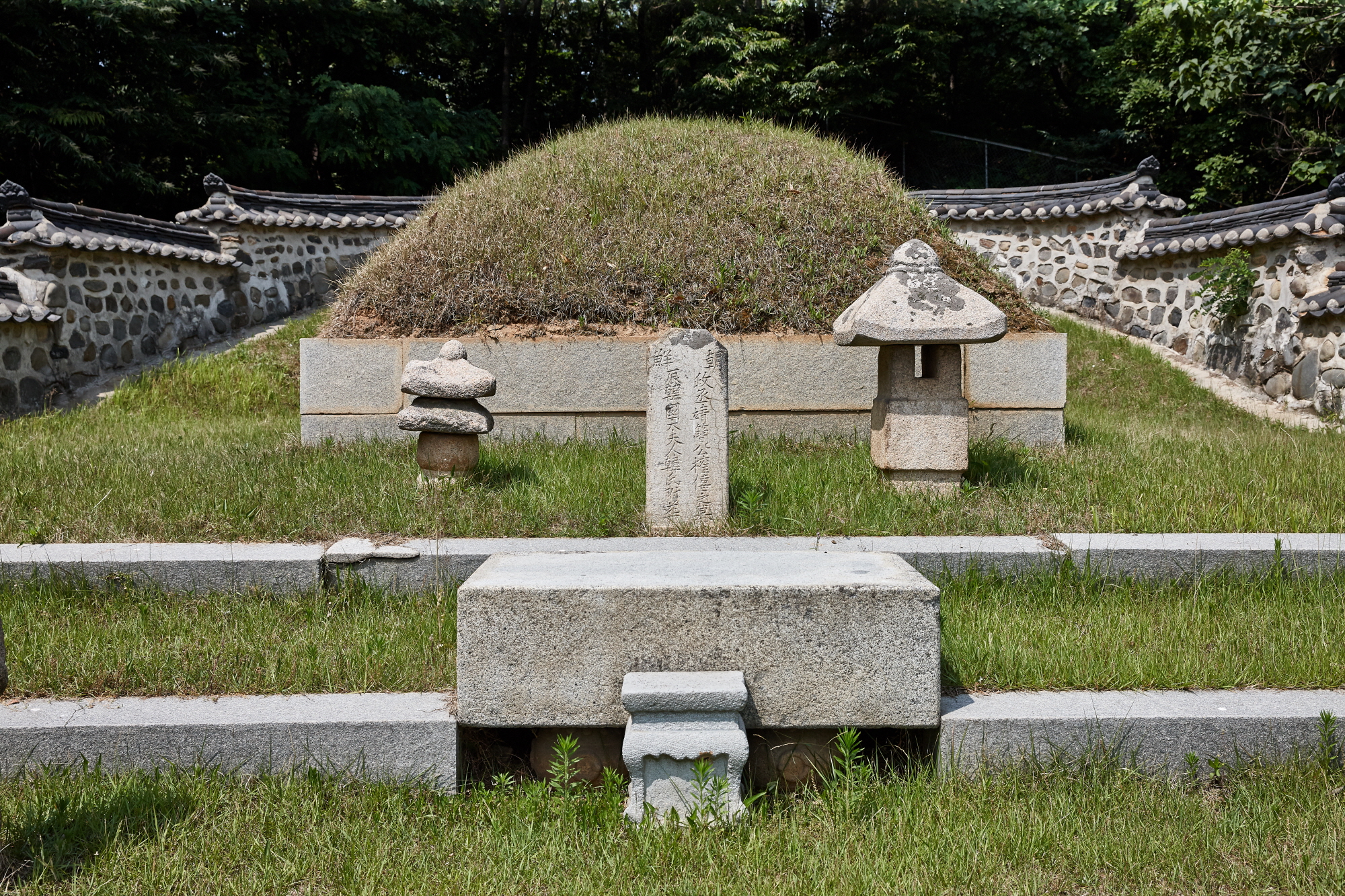
The grave of Kwon Hee
Designation number: Local Cultural Properties No. 38
Location: 60-6, Sungsadong Mountain, Deokyung-gu, Goyang City
Kwon Hee’s grave, along with the wife Han, is located in the village of Buldang-gol, Seongsa-dong, south of Wandang Station. There are two sets of graves,Jangmyeong lights, Sangseok, Goseok, Hyangroseok and Muninseok. Recently there are 1 set of oseok gravestone and mangjuseok, 2 of muninseoks at the front. The grave was originally a universal square grave at the beginning of the Joseon Dynasty, but now it has been renovated and transformed. The gravestone of granite is 83cm high, 33cm wide and 14cm thick, and the upper part of the gravestone is changed to the shape of a diamond. This type of gravestone is said to have been made in early Joseon Dynasty, but not easily seen. On the front of the gravestone, it says 'Chosunjeongseung Han Jang', and on the back, it says ‘Jeontonggisa’, which tells that it was built in Sejong 31st (1449). On the right side of the gravestone is a tall Jangmyeong lights with a height of 127cm. The structure is a general type seen in Joseon Dynasty. Another stone is visible on the opposite side of Jangmyeong lights, believed to be the original Jangmyeong lighthouse existed from the first. Muninseoks are believed to be built in the middle of the 15th century. It’s 110cm tall and has a similar look to those of Joseon Dynasty. The head is larger than the body and gets narrower towards the bottom, which is seen commonly in early Joseon Dynasty. There are also more muninseoks and sindobi nearby the grave. In conclusion, Kwon Hee’s grave is said to show a funny relic with many satirical and diverse facial expressions created at that time. Kwon Here was a liege of late Joseon Dynasty, born in the 6th year of King Chungsuk (1319) and died in the 5th year of King Taejong (1405) of the Joseon Dynasty. The family chain is Andong, the son of Kwon Kyo and the father of Kwon Keun, a political scientist and diplomat of Joseon Dynasty. He had served as a public office and went through various positions in Joseon Dynasty.
Minmyeong
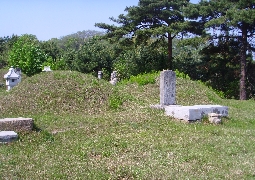
Shim Heesu's grave
Sim Heesu (1548 ~ 1622) is a leige of the mid-Joseon Dynasty, family of Cheongsong, name Baekgu and Ho of Ilsong. Born in 1548 and died in 1622 during the 14th year of Gwanghaegun. He learned theology at Jindo, enter entered Sungkyunkwan University at age of 21 and participated in the sacrifice event as student representative. He was appointed as a member of the Seonmunwon in the 5th year of the Seonjo Dynasty and served as various positions. The tomb of Sim Heesu is together with the grave of Gwangju Oh in the Cheongsongshim cemetery of the corner town of Wonheung-dong. There is the mausoleum, a stone statue, a stone celestial stone, a marble stone, and a recently newly built stone lights, and the old tombstone built in 1675 with the inscription of Shim Heesu and Gwangju Oh.
Minmyeong

Endless sincerity for Danjong, Lee Chuk teacher's grave
The pond leading the road from Heungdo-dong citizen’s office to Hawjeon is located at the entrance of the village. The total size of the pond is about 2,500 PY. At 200m southwest, the bi-axial teacher's tomb is located in Munin and retains the style of the Joseon era. There are one set of a tombstone, a stone statue, and the mausoleum. Lee Chuk is 2nd son of Lee Saek and grandson of Lee Jonghak, and served as Gwangju Pangwan in Sejong & Munjong, Sahyeonbu supervisor and Hwanghaedo provincial governor.
Minmyeong
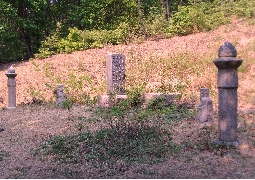
The most famous Hyojang in Goyang, Park Taesung’s grave
Park Taeseong is the protagonist of "Inwangsan Tiger and Legend of Park Hyoja" in the late Joseon Dynasty. His child is Kyeongsuk and is a family of Milyang. In the stone statue, it is written as ‘Joseon’s Hyoja Park Gongtaesung Monument. It was built in 1893 during the Joseon Dynasty (1893) to honor Park Taeseong's well-known reputation as the late Joseon Dynasty. Park Taeseong's grave is located at 250m behind Hyojabi is the third in both sides of the left and right, Wansan Lee and the former Gimhae Kim. There are 1 sangseok, 1 mangjuseok and 1 small muninseok in front of Bongbun, and the gravestone built in May in Jeongjo 2nd (1778) carved the information of the grave. There is a small grave that is said to be the Grave of Tiger next to the temple, and next to it is the recently made Tiger Statue. Below the grave of Park Taeseong, there is the grave of his father, Park Segeoul, whom Park Taeseong used to pray for everyday.
Park Taeseong’s Jeongryobi (Hyojabi) is located at the gate of the Mt. Bukhansan that leads to Uijeongbu from Bukhansanseong Fortress.
monument house
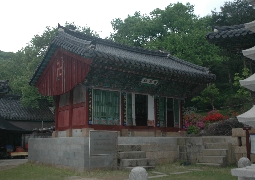
The beautiful roof of Mt. Hanmisan Heungguksa Temple Nahanjeon
Designated number: Goyang City Regional Cultural Properties No. 34
Location: 203 Jichuk-dong, Deokyang-gu, Goyang-si, Gyeonggi-do
Heungguksa Temple, which was first built during the reign of King Silla Munmu, is the oldest temple in Goyang and has many cultural heritage sites. Located at the foot of Mt. Bukhansan and near Mt. Hanmisan, Heungguksa Temple has a total of 10 designated cultural heritages and protected trees. There is no Daeungjeon like in general temples in Heungguksa, but instead there is a central temple called Yaksajeon. Yaksajeon Temple was first built in 1710 and is designated and protected as the Gyeonggi-do Regional Cultural Properties No. 57. The latest version of the Hyeonpan (signboard) of Yaksajeon was known as the writing of King Yeongjo, and on the side and back there is a Buddhist painting of the Bicheondo. There are Yaksayeoraesang in the temple hall, and it is a beautiful building with a fantastic monument displayed in the building.
As being Goyang’s Cultural Asset No. 43, Nahanjeon Temple is located on the west side of Yaksajeon Temple which is the main gate of Heungguksa Temple. The Nahanjeon maintains the roof facing the other roof of the building. In the middle of the building, there is a signboard called Nahanjeon, where the statues of King Sacheon and floral patterns are combined to produce the beauty of Korean traditional architecture.
Nahanjeon is slightly smaller than Yaksajeon and is located northeastward. The wooden building is on top of a well-polished granite base, with stairs in the front.
Nahanjeon is accessed by a bus number 156 from the Gupabal Subway Station and a 15-minute walk from the entrance from Heungguksa Temple Station by bus.
Buddhist architecture











